
Hong Kong Common Crop Pests
Phyllotreta Striolata (Leaf Beetle / Striped Flea Beetle)
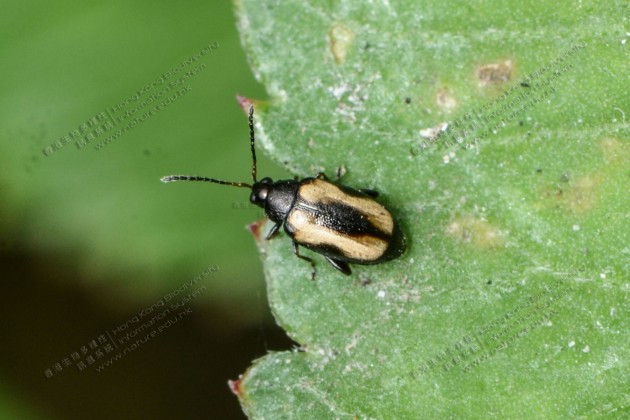
Morphology: The yellowish-white mature larvae are in a long cylindrical shape of 4 mm. Adults striped flea beetle imagoes are 2 mm long, glossy black in color with a greenish tinge. There are a pair of yellow vertical stripes on both sides of the elytra. Imagoes will jump like a flea when being disturbed.
Host: Striped flea beetle majorly feed on cruciferous vegetables such as flowering Chinese cabbage (Choy Sum), Chinese white cabbage (Bok Choy) and radish. But they may also feed on other members of solanaceous fruits, melons, and legumes.
Damage to crops: Striped flea beetle adults feed on the foliage and the larvae on the root, especially harmful to the seedlings. Imagoes may consume the whole cotyledon, leading to the death of the plant. Larvae mostly live in the soil, consume root bark and fibrous roots, causing the yellowing and withering of the leaves.
Prevention and treatment:
- Till the soil before planting can help eliminate a portion of the pupae and larvae of striped flea beetle.
- Remove stubbles and weeds frequently can help eliminate overwintering places and food for striped flea beetle.
- Take the advantages of the jumping behavior of striped flea beetle, use the bug-sucking machine to remove their adults. If necessary, farmers can borrow from the Tai Lung Experimental Station of the Agriculture, Fisheries and Conservation Department (AFCD).
- Spray derris root extract can eliminate striped flea beetle
- Cover the field with cotton-like non-woven fabric net (commonly known as cotton net) to deter striped flea beetle from jumping into uninfected area.
Image source: Hong Kong Biodiversity Information System (HKBIS)
Pieris Canidia (Indian Cabbage White)
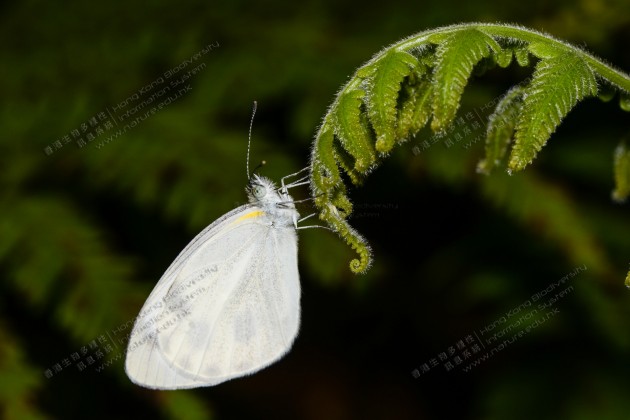
Morphology: The larva is velvety green with a light-yellow thread on the back. Male and female adults (imago) are dimorphic, both with wingspan ranging from 50 to 60 mm.
Host: Indian cabbage white majorly feed on cruciferous vegetables such as cauliflower, Chinese cabbage, flowering Chinese cabbage (Choy Sum), and daikon radish. Vegetables with a smooth and hairless leaf surface, and broccoli and cauliflower with mustard oil and glycosides are particularly preferred by the Indian cabbage white.
Damage to crops: The larvae of Indian cabbage white majorly gnaw on the leaves. Young larvae feed on the leaf flesh without consuming the transparent epidermis, while the grown-ups consume the whole leaf. Feces from larvae will contaminate the leaves, affecting the appearance and selling price of the crop.
Prevention and treatment:
- Remove the stubbles after harvest in the field to eliminate pupa and eggs.
- Catch the pupa and caterpillar by hand. Farmers can look for pests at the bottom of the leaves that have just been gnawed by the pest before the sunrise.
- Avoid intercropping with cruciferous crops but with onions and garlic.
- Spray derris root extract or Bacillus thuringiensis (Bt) as the biological control of Indian cabbage white.
Image source: Hong Kong Biodiversity Information System (HKBIS)
Bactrocera Cucurbitae (Coquillett / Melon fly)
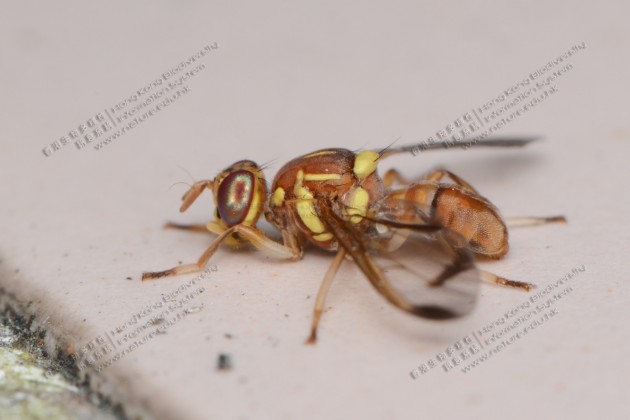
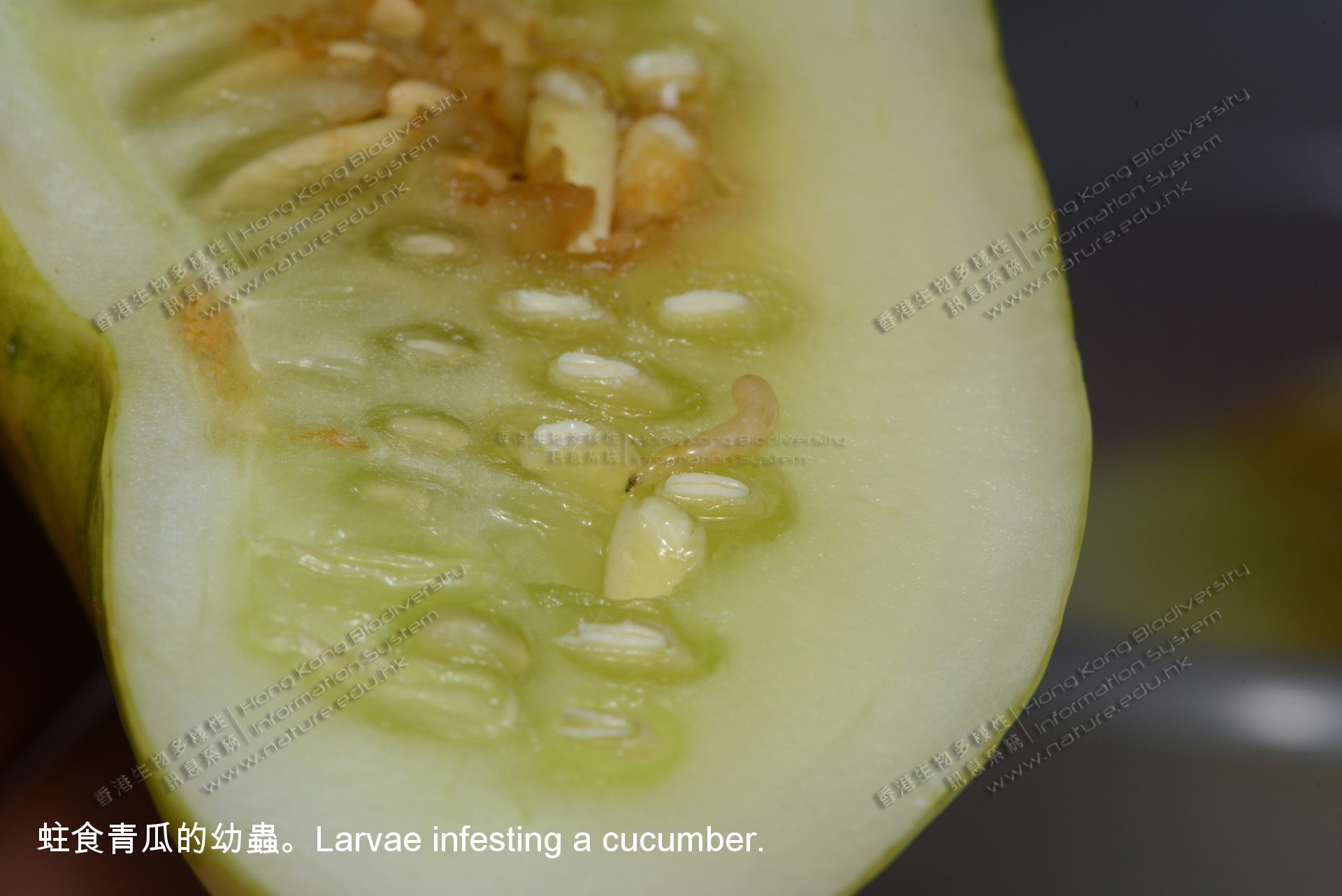
Morphology: The milky white larva of melon fly is in cylindrical-maggot-like shape with a black mouthpart. It is around 10 mm in length. Mature larvae jump into the soil for pupation. The bee-alike adult (imago) of melon fly is around 5-8 mm, with wingspan of 16 mm. The adult is ranging from yellowish-brown to yellow-black, with yellow stripes on the mid-pectoral dorsal plate, and brown spotted transparent wing.
Host: The melon flies majorly feed on cucurbitaceous crops such as bitter cucumber, wax gourd, hairy gourd, cucumber, angled loofah, chayote and pumpkin.
Damage to crops: Female adults lay eggs under the epidermis of young melons through the oviposition tube. The opposition will lead to the yellowing of the epidermis with gummosis (flow of gum-like substance). The newly hatched larvae feed on the melon from inside, which will lead to the rotting and dropping of fruit.
Prevention and treatment:
- Cover the melon with bags to prevent the eggs laid on the melon fruit.
- Use yellow sticky boards with pomegranate juice as traps to catch fruit flies.
- Remove the fruit infested by melon flies, burn them or bury them in a pit with a 1-meter depth to eliminate the melon flies’ population.
Image source: Hong Kong Biodiversity Information System (HKBIS)
Ostrinia Furnacalis (Asian Corn Borer)
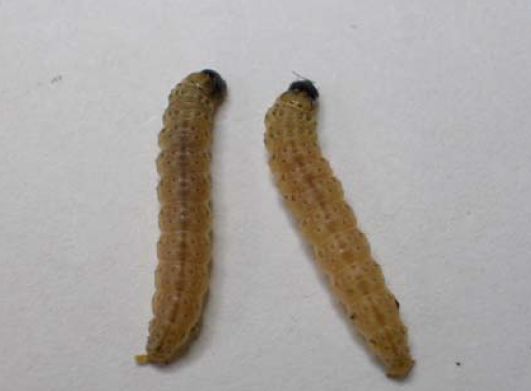
Morphology: The brown-headed late instar larva is either yellowish-brown, pale pink, or pale grey with dark spots and hairs. The larva can reach up 20 -30 mm in length. The scaly eggs are about 1 mm long in a flat oval shape. The eggs are mostly found in fish scale-like order at the underside of the leaves in a group of 20 to 60. Adults Asian corn borer are about 13 to 15 mm long.
Host: Asian corn borer can feed on multiple vegetables, such as corn, tomato, green pepper, eggplant, legumes, ginger, and beets etc.
Damage to crops: Newly hatched larvae will feed on tender leaves and male flowers, affecting pollination and leading to the deformation of corn. Growing borers feed on stems and fruits, causing the rotten and breakage of corn.
Prevention and treatment:
- Remove corn stalks, hulk, and styles in autumn to eliminate the overwintering places of larvae.
- Cultivate the insect-resistant germplasm.
- Remove the parts that have been bitten by insects.
- Remove the staminate flowers of corn (Emasculation).
- Use Trichogramma wasps, Bacillus thuringiensis and Steinernema as the biological control of pests.
Image source: Hong Kong Biodiversity Information System (HKBIS)
Spodoptera Litura (Oriental Leafworm)
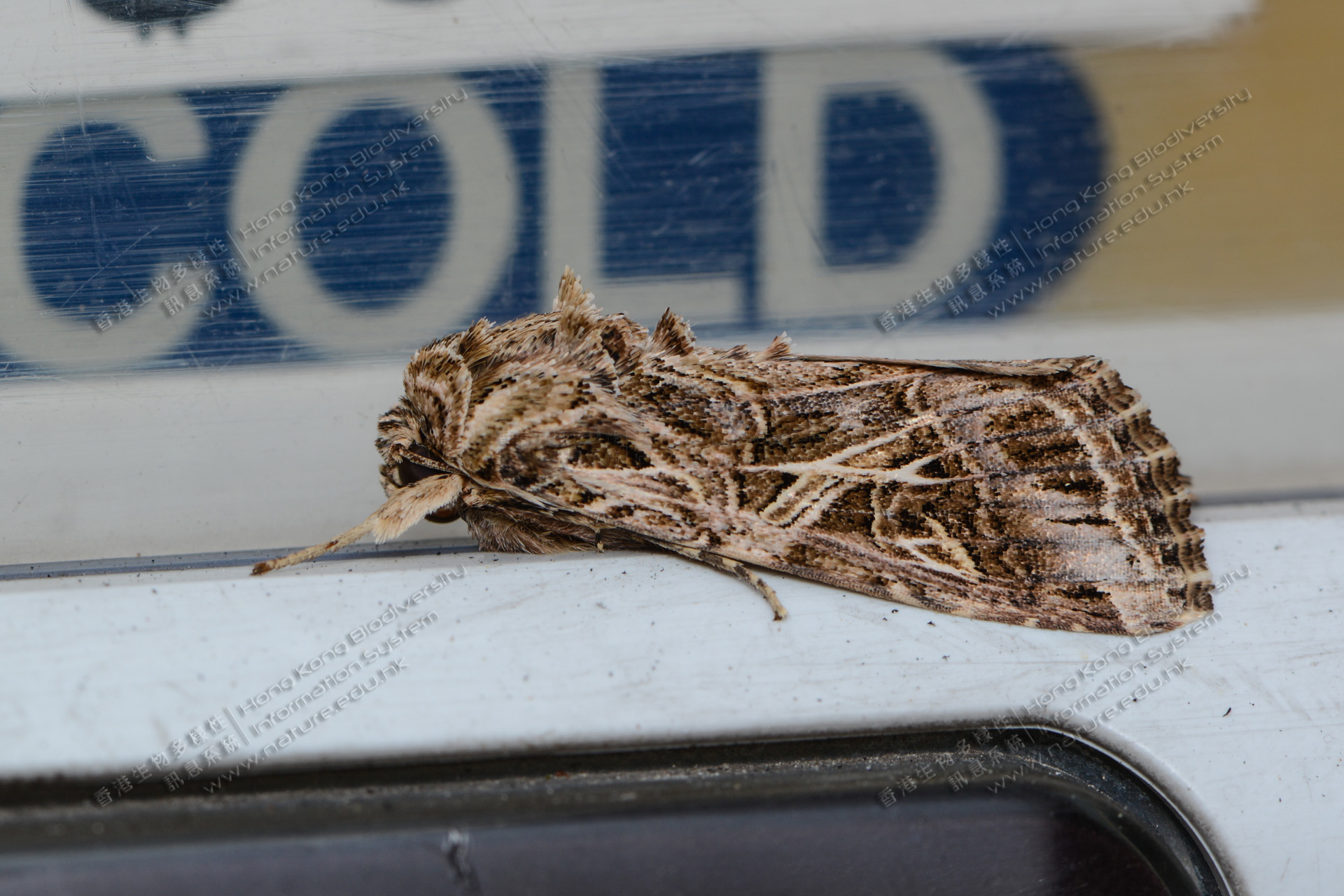
Morphology: The growing oriental leafworm larva is around 35mm to 50 mm long. It has brown head and wings, with various color of the abdomen. Starting from the 4th instar, the color of the oriental leafworm larva will change along with the population density, it turns black when the density is high, and it is earthy yellow to dark green when the density is low. The reddish-brown pupa is typically 15 -20 mm long while their eggs are pale yellow bun-shaped with a diameter of 0.5 mm.
Host: Oriental leafworm majorly feed on greens such as leaf-mustard, cabbage, kale, water spinach, Chinese cabbage (Bok choy); melons and fruits such as bitter cucumber, eggplant and cantaloupe; legumes such as cowpea and edamame etc.
Damage to crops: The newly hatched larvae are living in groups. They feed on leaves, flowers, and fruits; and leaving only the transparent epidermis. In some severe cases, the whole leaf is consumed or only the midrib remains. Larvae can also eat into the cabbage bulbs, leaving the feces and leading to the rotting of crops.
Prevention and treatment:
- Flood the field with water to eliminate the remaining larvae and pupae in the field before the next round of planting.
- Remove the parts of crops where eggs are found.
- Make use of the phototaxis in adult worms and set up light traps. Sugar-vinegar mixture, fermented sugar, vinegar, brewing grains, and soybean cakes with derris root extract can also be used as traps.
- Introduce the natural enemies of oriental leafworms such as green lacewings, Orius, Eocanthecona furcellata, and Snellenius manila as biological pest control.
- Use Spodoptera litura nuclear polyhedrosis virus (SlNPV) as biological pest control.
Image source: Hong Kong Biodiversity Information System (HKBIS)
Spodoptera Exigua (Beet Armyworm)
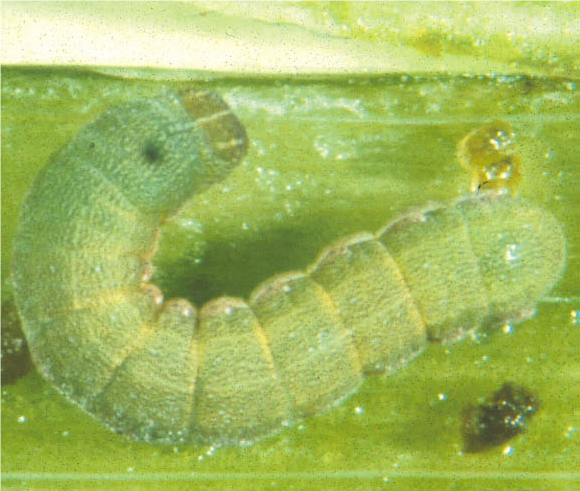
Morphology: The beet armyworm adults have a body length of 1.2 – 1.4 cm. The forewings are in dull grey and sprinkled with kidney-shaped scales. The fusiform pupae change their color gradually from light green to dark brown upon maturation. The larvae are 30 to 40 mm long, with their body color vary from yellow, green, light green, and grayish brown. The pale-yellow eggs are round in shape with radial ridges.
Host: Beet armyworm majorly feed on cucurbitaceous crops such as cucumber, eggplant, watermelon, cantaloupe, angled loofah, bitter cucumber, and squash; fabaceous crops such as pea, cowpea, green soybean, adzuki bean, and soybean; solanaceous crops such as tomato, eggplant, green pepper, and pepper; cruciferous crops such as kale, lettuce, leaf-mustard, Indian mustard, Chinese white cabbage (Bok choy), cauliflower, and daikon radish.
Damage to crops: The beet armyworm larvae usually gather at the bottom of the leaf. They spin silk to connect several leaves. They feed on the leaf flesh without consuming the epidermis, leaving transparent pores on leaves. In some severe cases, only the veins and petioles are left on the leaves, leading to the death of seedlings. The gnawed places will become a nourishing place for fruit flies and cause harm to the plant. Larger larvae can consume bell pepper, tomatoes, or other fruits, leading to rotting and fall of fruits.
Prevention and treatment:
- Till the field and remove weeds more often.
- Remove the eggs or larvae manually.
- Flood the field before planting to kill the pupae in the soil.
- Use the beet armyworm sex pheromone sustained-releasing trap box.
- Use derris root extract and Bacillus thuringiensis as biological control of beet armyworm.
Image source: Produce Green Foundation– Handbook of common vegetable pests and diseases in Hong Kong and control measures
Thrips Palmi (Melon Thrips)
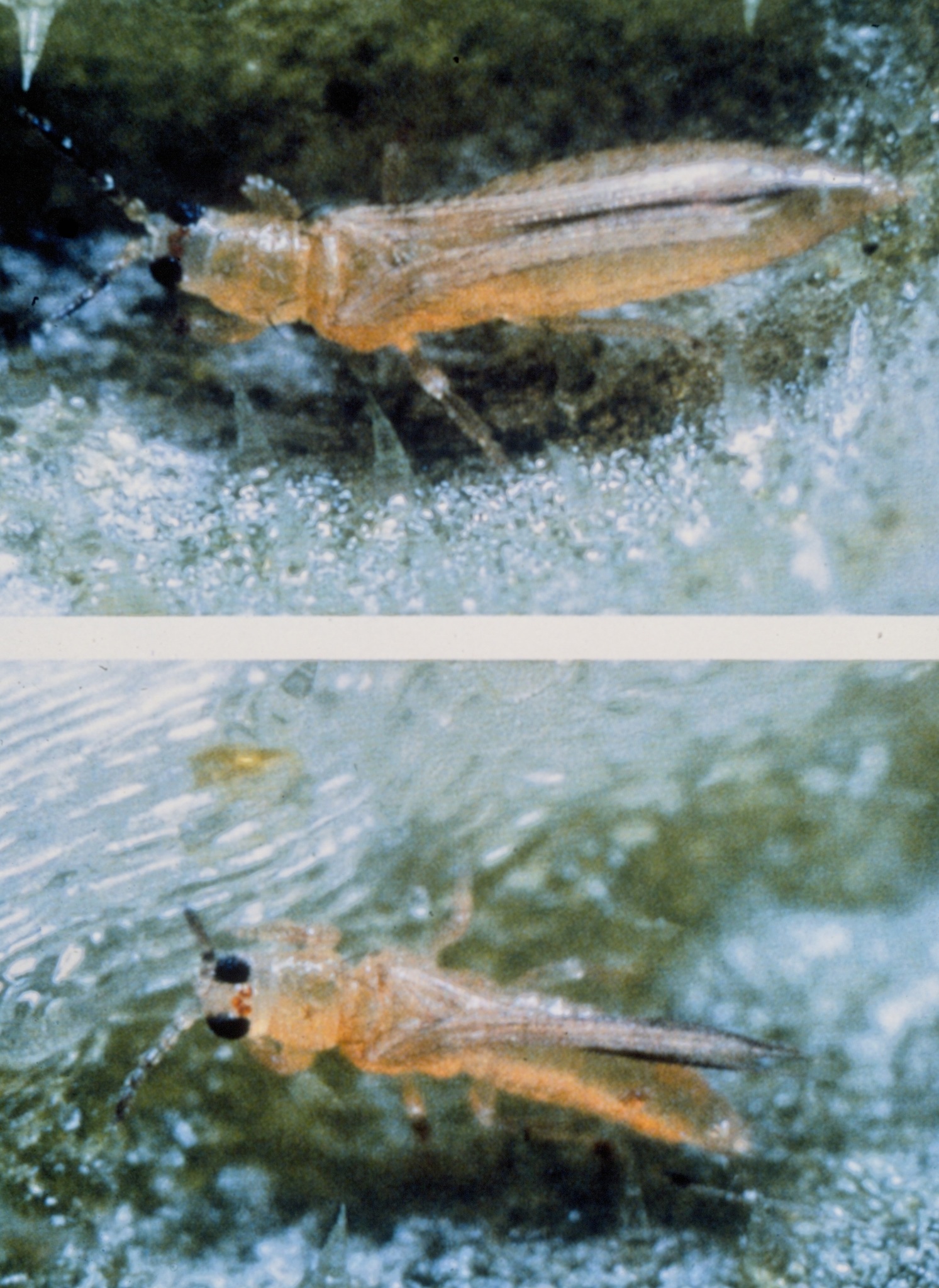
Morphology: The golden yellow imago is about 1 mm long, covered with fine dark setae. It has two pairs of wings, flat and long abdomen, slightly protruding compound eyes in brown. The yellowish-white nymphs are reported with three instars. The pale-yellow oval eggs are often laid in tender leaf tissues.
Host: Melon thrips majorly feed on hairy gourd, cucumber, bitter cucumber, wax gourd, watermelon, eggplant, oriental pickling melon, bell pepper, leguminous vegetables, and cruciferous vegetables, etc.
Damage to crops: Imagoes and nymphs of melon thrips suck plant sap and damage young shoots, young leaves, flowers, and young melons. Injured young leaves curl and shrink, with hairs turned to grayish brown. The plant will become shortened with affected plant growth. The injured young melons will be hardened. There will be brown ripples on the injured melon with darkened hairs, which may fall off in some severe cases.
Prevention and treatment:
- Avoid sowing seeds during the peak thrips period.
- Remove or bury the stubbles deep after harvest.
- Cover the ground with mulch to prevent the nymphs from falling and pupating in soil andadults from climbing out after emergence. This practice can reduce the insect population density by about 70%.
- Avoid using pyrethroid pesticides. It will kill the natural enemies of thrips, including minute pirate bugs, Muridae, and lacewings, etc.
- Use blue or yellow sticky board traps with diluted alcohol and soap water as traps. Cover the field with silver reflective mulch or cotton net to prevent spreading of melon thrips.
Image source: Florida Division of Plant Industry Archive, Florida Department of Agriculture and Consumer Services, Bugwood.org
Liriomyza Sativae (Leaf Miner)
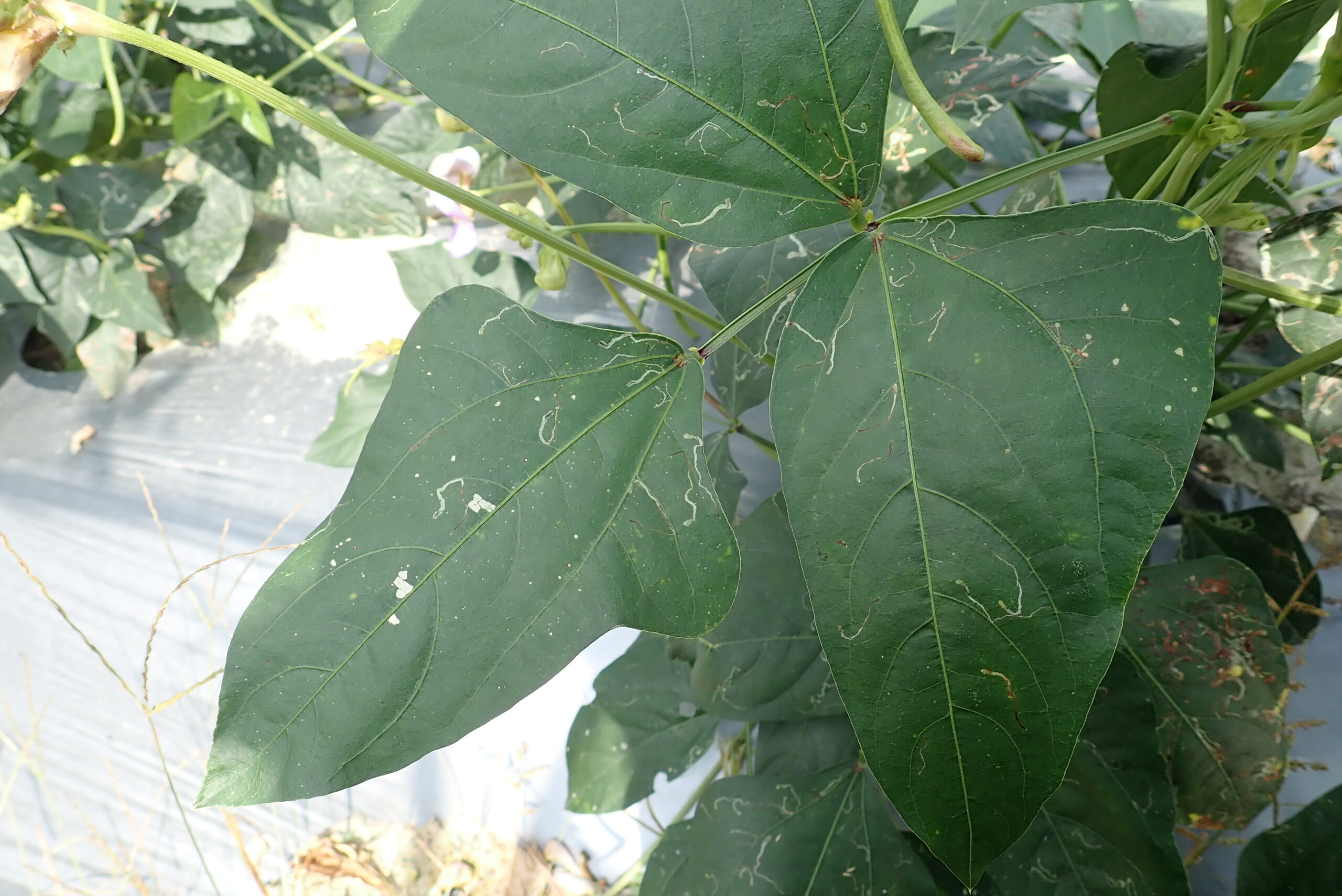
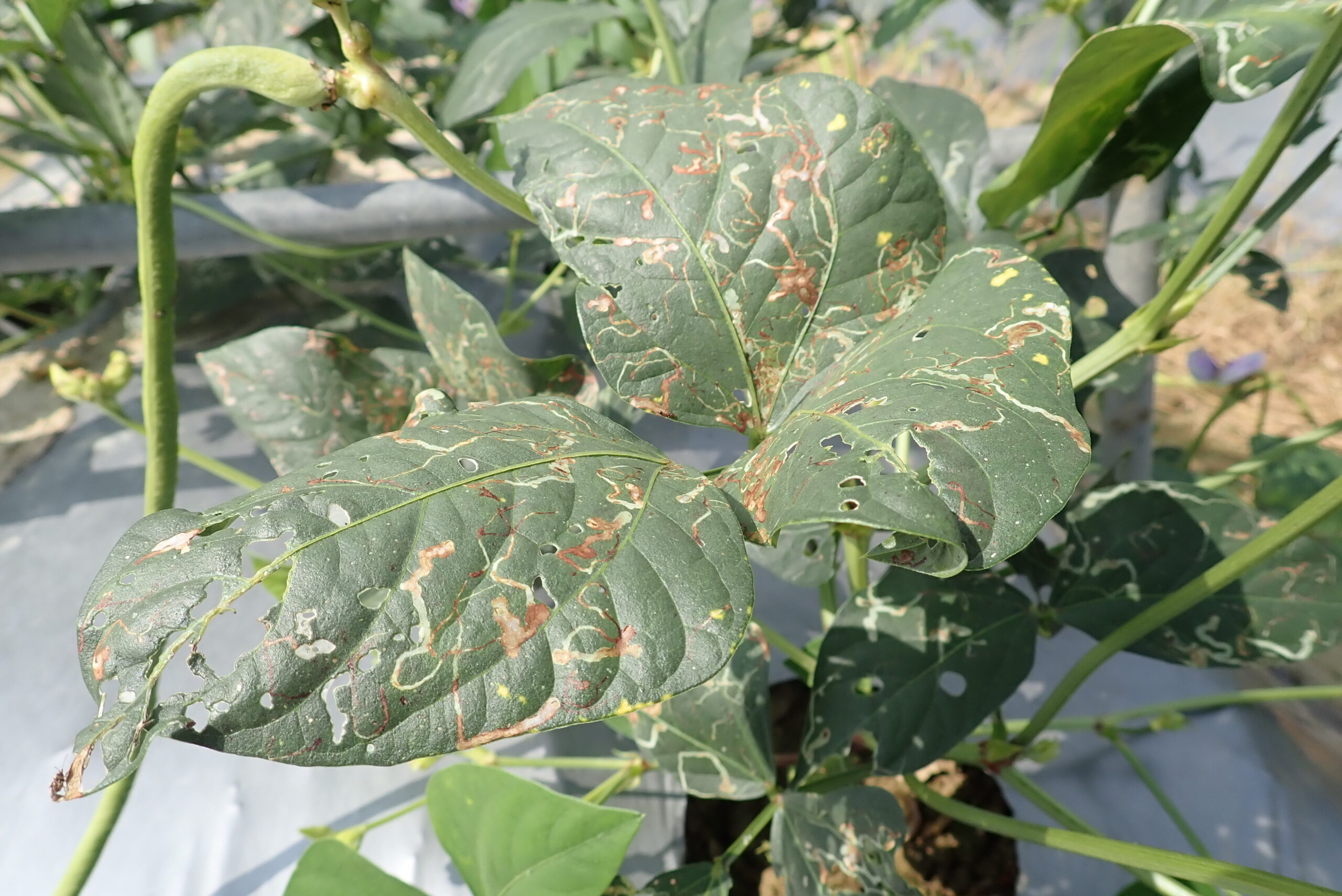
Morphology: Adults of leaf miner is yellow in color with a reddish-brown head. They are small, but the females are larger than males in general. Female leaf miners’ adults pierce eggs onto the leaves, leaving many tiny white spots in the size of the needle eye. The larvae have three instars. They change from colorless to dark yellow gradually. Larvae hide and feed in the leaves, forming irregular curved snake-shaped cavities. The feces are arranged at the edges of both sides of the punctures alternately. Leaf miner crawls out of the leaf after maturation. They may stay on the leaf surface or fall to the soil for pupation. It takes around 7 to 14 days for the pupa to develop into adults, while the growth cycle of leaf miner is completed in 20 to 30 days.
Host: Leaf miners can damage a variety of vegetables and ornamental plants; the hosts are from more than 14 families. They prefer members from Leguminosae, Solanaceae, and Cucurbitaceae. The major hosts include cruciferous, beans, celery, peas, onions, garlic, melons, tomatoes, spinach, Asteraceae, and carnations. Leaf miners can also inhabit a variety of wild plants as intermediate hosts.
Damage to crops: The larvae of the leaf miners consume the flesh (mesophyll tissue) of leaves, not petals and fruits, which will seriously affect the photosynthesis, yield and appearance of the crops. In addition, the leaf miner can spread various kind of diseases.
Prevention and treatment:
- Collect the infected crops, burn, or bury them underground to prevent the spread of pests.
- Avoid planting the susceptible crops continuously.
- Remove weeds and stubbles more often.
- Use the non-infected seedling for planting.
- Use sticky yellow traps to monitor the presence of leaf miner population in the field as they are preferentially attracted by yellow. Male leaf miners prefer to fly low between plants than female leaf miners. Thus, yellow traps can be used to reduce male leaf miners during mating season.
- Reduce the application of chemical insecticides or apply insecticides that are harmless to the natural enemies of leaf miners. Cyromazine can be used as the selective insecticide. The increased number of leaf miners’ natural enemies can be the biological control.
- Use chemical insecticides that can effectively control leaf miner larvae; pyrethroids are effective against adults.
- Use selective systemic insecticide against leaf miner larvae such as Cyromazine Premix. It is not harmful to other beneficial insects such as bees, parasitic wasps, and floating insects.
- Reduce the use of a single pesticide with the use of alternate pesticides with different chemical characteristics, to avoid the development of pest resistance of leaf miner.
Image source: Hong Kong Seed Technology and Education Center
Aphid
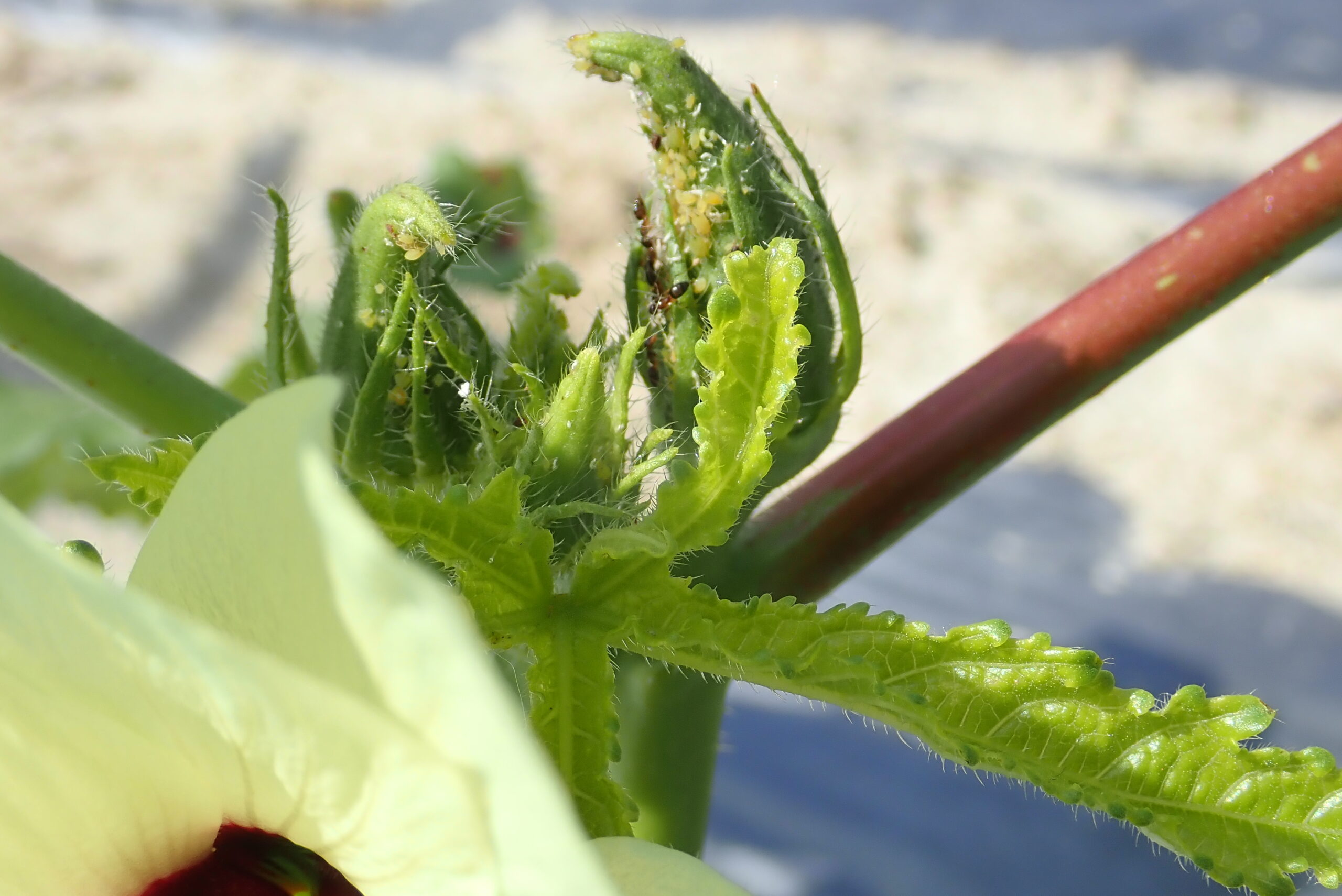
Morphology: Aphids are also called “greenflies” and “blackflies”. Aphids are mainly divided into green peach aphid, turnip aphid, Brevicoryne brassicae, melon aphid (also called cotton aphid), and Aphis medicaginiskoch (Aphis craccivora Koch). Different aphids have different shapes and sizes. On average, the wingless viviparous female aphids are about 1.5 to 2.5 mm long, while the winged viviparous female aphids are about 1.2 to 2.2 mm long.
Host: Aphids majorly feed on cruciferous crops, solanaceous crops, asteraceaeous crops, chenopodiaceous crops, and legumes. They also feed on other crops such as tobacco, fruit trees, melons, and cotton.
Damage to crops: Aphids can damage leaves, branches, flowers, and other newly grown parts of plants. Adult aphids and nymphs suck the host sap, reduce plant water content and lead to poor plant growth. Damaged leaves will be shrunken, stagnated, and eventually withered.
Prevention and treatment:
- Use silvery-grey film strips between the crop’s intervals due to the negative tropism of aphids towards silver color. This method is usually adopted for preventing aphids in seed beds.
- Remove the yellow leaves and fruit dropped to cut the source of transmission. Adult winged aphids are highly tropic to yellow and orange color.
- Spray the wintering hosts such as pepper, peach trees, hibiscus, pomegranate, hibiscus, and buckthorn around the farmland with pesticides to prevent overwintering insects from spreading in early spring.
- Spray pesticides directly on the leaf backs and young parts where aphids like to gather.
- Fumigate the host with pesticide or cover the pesticide-soaked paper on the burning sawdust, grass powder, and charcoal.
Image source: Hong Kong Seed Technology and Education Center
Nezara Viridula (Green Shield Bug)
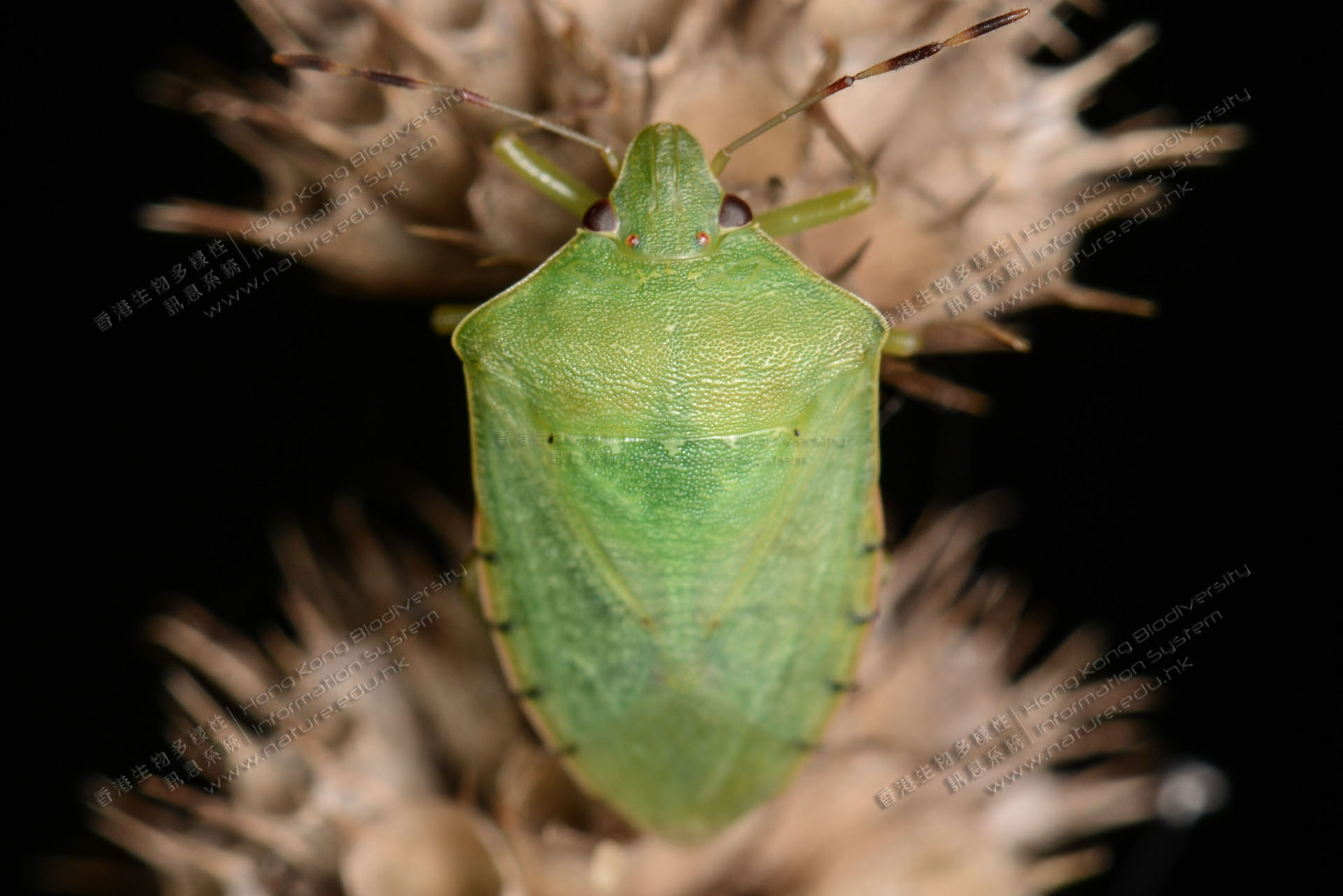
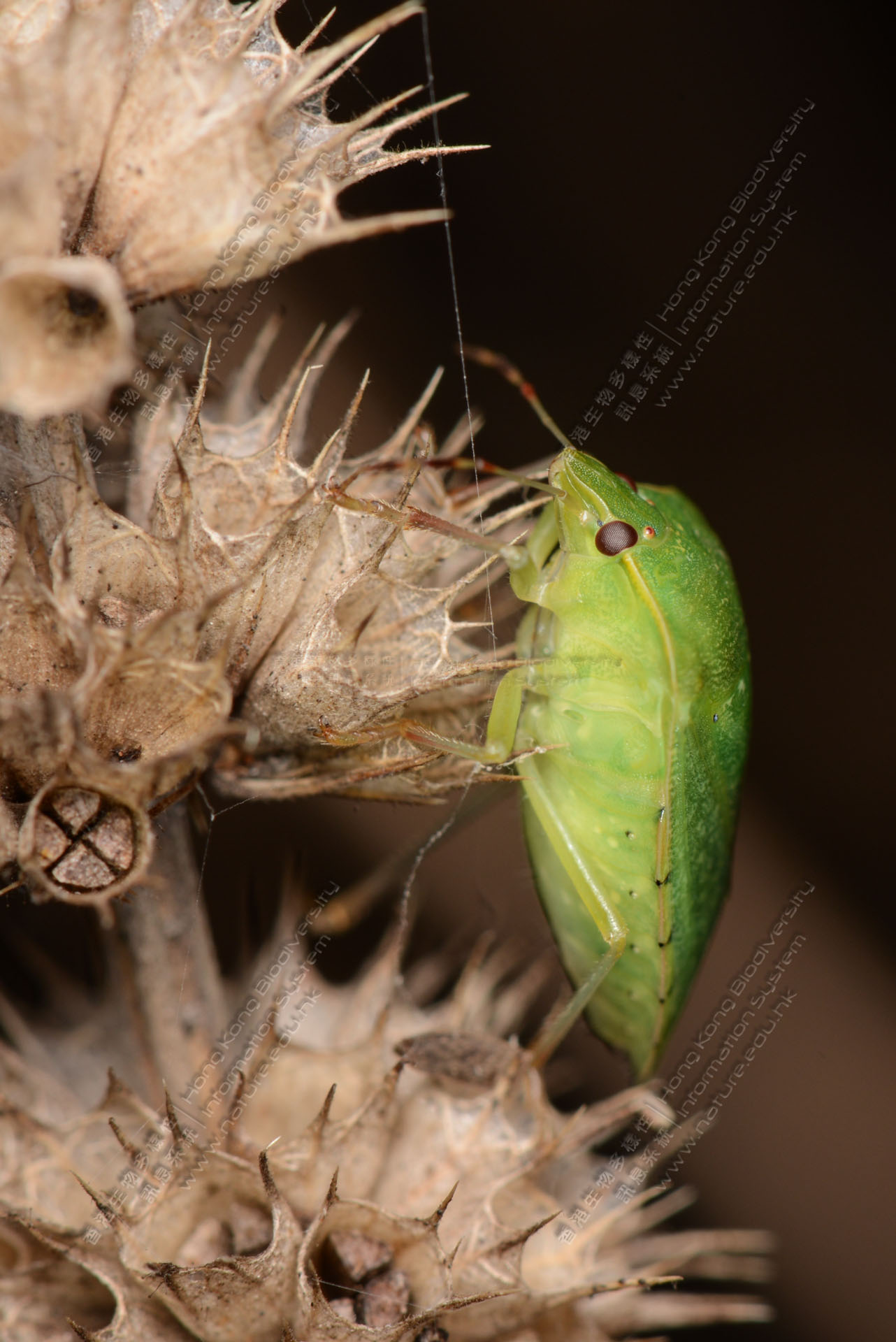
Morphology: Imagoes are usually 12-15.5 mm long with a green (forma typical), yellow belted (forma torquata), or green spotted (forma auraniaca) in appearance. Most bugs are in light green including their antennae and legs. The cup-shaped eggs with lids would turn from milky white to ochre along maturation. The larvae are reported with five instars. They are yellowish-red when hatched, and become green upon maturation.
Host: Green shield bug majorly feed on wheat, grain, sorghum, vegetables, legumes, corn, cotton, sugar cane, sesame, tobacco, and fruit trees.
Damage to crops: Adults of green shield bug feed on the juice of grains by sucking, leading to the formation of unfilled grain. The damaged grains will form dark brown spots at the pierced location, resulting in “pecky rice” with a characteristic bitter taste.
Prevention and treatment:
- Spray pesticides in the field, especially at the beginning of overwintering adults gather in the rice field, when grains bolt or the density of bugs are high.
- Spray kerosene on the paddy field. The bugs would be killed when in contact with kerosene. Change the water afterwards.
- Timely remove the stubbles and weeds in the field.
Image source: Hong Kong Biodiversity Information System (HKBIS)
Diaphania Indica (Cotton Caterpillar / Cucumber Moth)
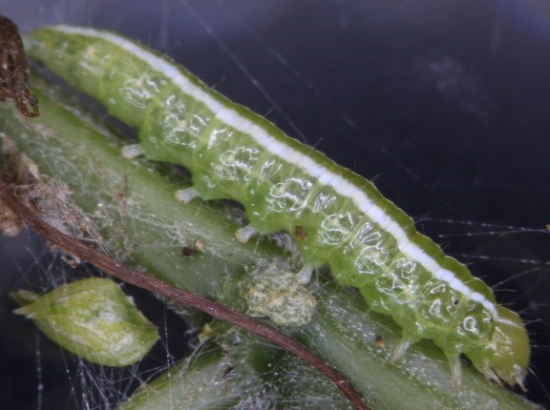
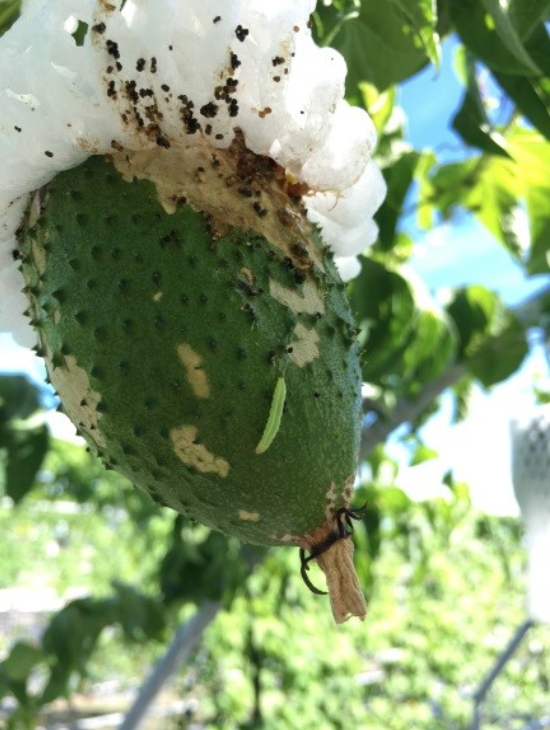
Morphology: The adult is about 10 mm long, with a wingspan of 25 mm. The head, thorax, and end of the abdomen of the adult cotton caterpillar are black. And their wings are translucent with black wide bands linings. The mature larva is about 22 to 27 mm with a pale brown head and pronotum. The thorax and abdomen are light green, with two vertical white strips at the back. The 14 mm long pupa turns from light green to dark brown, covered by a cocoon. The light green oval-shaped eggs are covered with tortoise shell-like marking on the surface.
Host: Cotton caterpillars majorly feed on melons such as bitter cucumber, loofah, hairy gourd, watermelon, wax gourd and cucumber. They also feed on solanaceous fruits.
Damage to crops: Young larvae feed on the leaf flesh on the back of the leaf without consuming the transparent epidermis. After the third instar, it will spin silk to roll itself with leaves. The larvae will hide in the cocoon and eat the leaves until veins are left. The larvae will also gnaw on melons and fruits, affecting the yield and quality.
Prevention and treatment:
- Remove larvae and pupae, and clean-up stubbles after fruits are harvested.
- Cover the melon seedlings with insect-proof nets to prevent adult worms from laying eggs.
- Use beet armyworm-specific pesticides during the first three instar stages, as they are less resistant to pesticides.
Image source: Council of Agriculture, Executive Yuan
Taiwania Circumdata
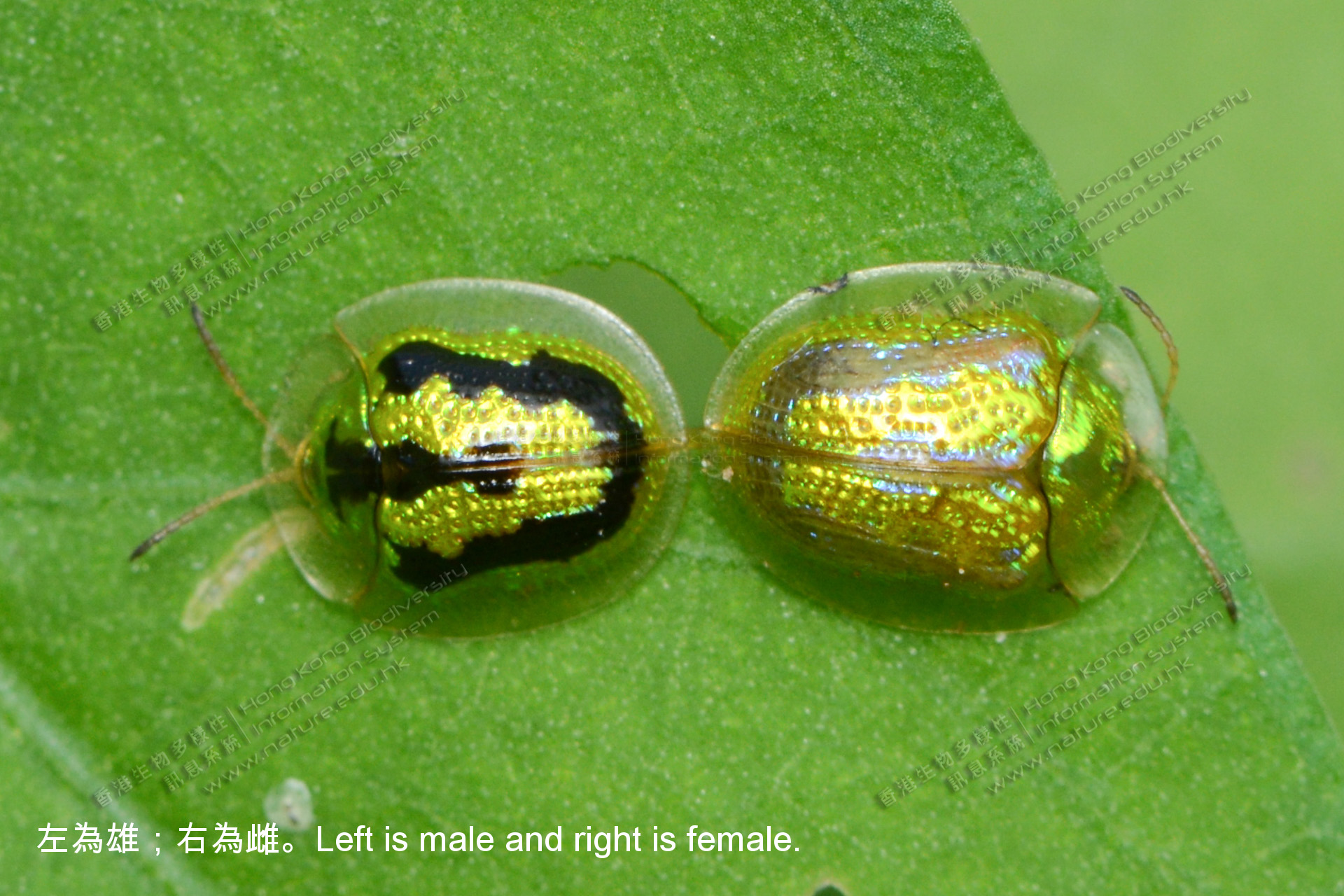
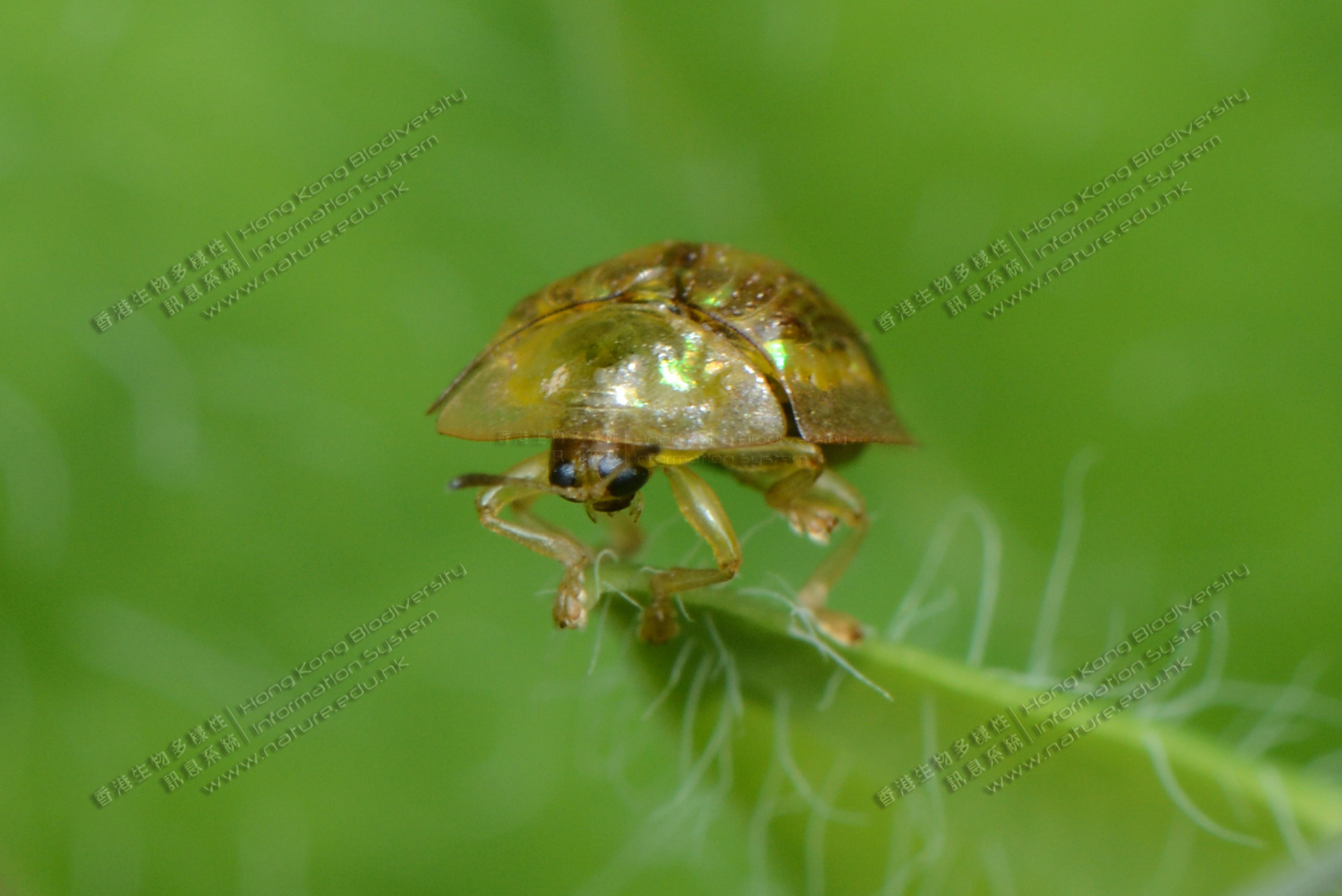
Morphology: Adults are in 4.2-5.6 mm, ranging from light green to yellowish green in color with a metallic glow. The dark green oval larva is about 5 mm.
Host: Taiwania circumdata majorly feed on convolvulacous crops such as water spinach and sweet potato.
Damage to crops: Imagoes and larvae of Taiwania circumdata consume the leaves of the host plant, leaving holes on the leaves. In some severe cases, the whole seedling is consumed.
Prevention and treatment:
- Remove the stubbles and weeds in the field to reduce the overwintering places for insects.
- Treat the seedlings with larvae-killing solution before planting.
Image source: Hong Kong Biodiversity Information System (HKBIS)
Papilio Machaon (Old World Swallowtail)
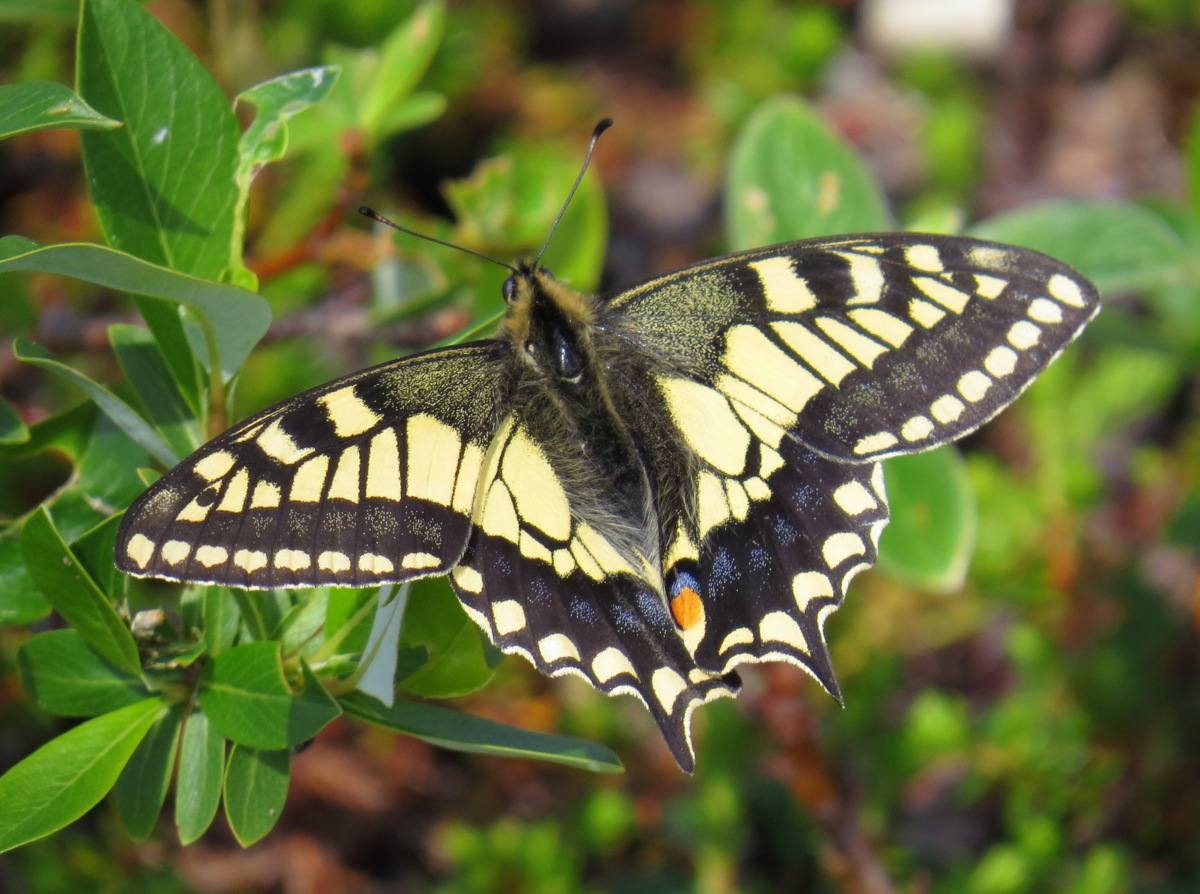
Morphology: The imago of old-world swallowtail typically has black vein markings on wings, a wingspan of 82 to 94 mm, and a body length of 25 to 32 mm. The pupa is grassy green or yellowish-brown in 33 to 35 mm. The larva has five instars with average of 19 days of maturation. Mature larvae are 52 to 55 mm long and have a stout body with yellow and black spots and a small green head.
Host: Old world swallowtails majorly feed on apiaceous vegetables such as fennel, carrots, celery, coriander, and Chinese medicinal materials such as Saposhnikovia divaricate (FangFeng).
Damage to crops: The larvae feed on the leaves, leaving the midrib and petioles only.
Prevention and treatment:
Apply pesticides at 5-7 days after oviposition as young larvae have weak resistance to pesticides. Use 2.5% Deltamethrin (5000x), 90% trichlorphon crystal (1000x), Bacillus thuringiensis emulsion (500x to 800x) to spray the infected plants.
Image source: Nick Block@INaturalist
Pyrausta Phoenicealis (Perilla Leaf Moth)
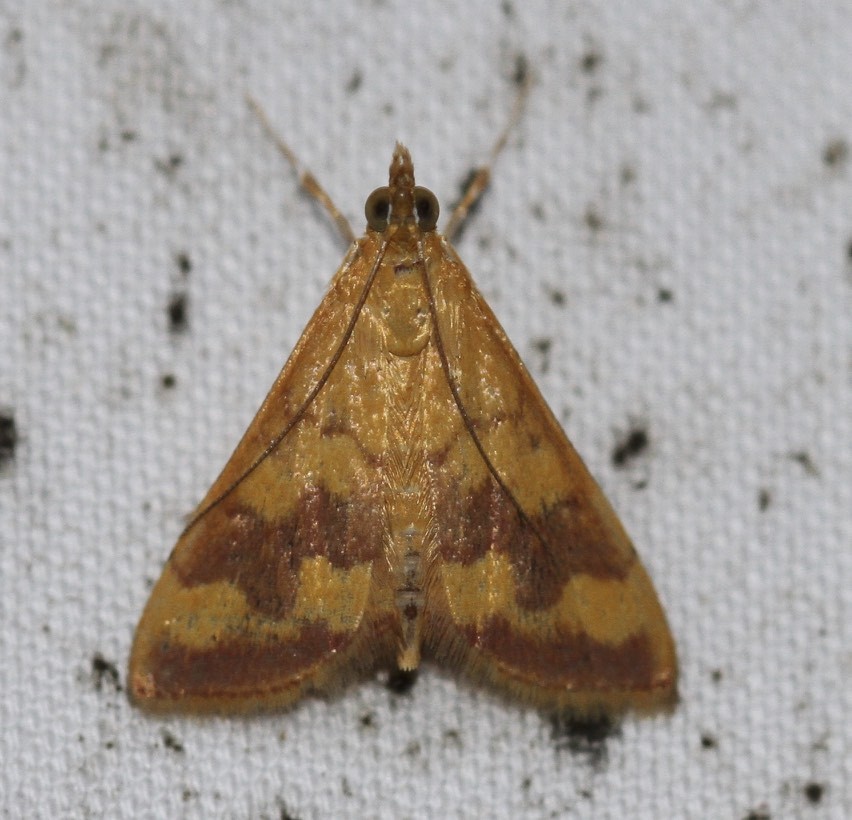
Morphology: Imago of perilla leaf moth is around 6 to 7 mm long, a wingspan of 13 to 15 mm. It is yellowish brown in color, including the head and filamentous antennae. The brown-yellow pupa is in a spindle shape with around 8 mm long. The brown-dot headed larva is around 18 mm long, generally in green or purple. The eggs are in flat oval shape and may change from grayish white to pale yellow upon maturation.
Host: Perilla leaf moth majorly feed on lamiaceous crops such as perilla, mint, Phlomis umbrosa Turcz. (Cao su), basil, rosemary, oriental motherwort, Lycopus asper (Ze Lan), and red sage. Perilla, mint and Ze Lan are particularly affected.
Damage to crops: Perilla leaf moth larvae spins silk to connect tender leaves, leading to the formation of curled tips. They feed on leaves, leaving holes, or breaking of the shoots. The feeding action can affect the growth and development of the host.
Prevention and treatment:
- Remove stubbles after harvest. The remaining plants should be properly treated, and the soil should be thoroughly tilled before winter to reduce the overwintering insect population.
- Avoid crop rotation or intercropping with lamiaceous crops.
- Remove the damaged parts of the plant more often.
- Spray pesticide such as 2.5% cyhalothrin (2000x), 10 % chlorfenapyr (1000x), 5% emamectin benzoate (1000x), 2.5% Deltamethrin (2000x) or 20% fenvalerate (2000x) to control the spread of pest at the young larval stage.
Image source: Ian McMaster@INaturalist
*Details of sources and reference please refer to the Chinese version.
